14 About Me Examples & How to Create The Perfect Writer About Page
Check out these amazing about me examples from writers and read our how-to guide on creating the perfect about page.
If there’s anything that feels close to impossible, it’s trying to fit everything important about yourself into a sentence-long short bio. But don’t worry too much about squeezing everything into just one line. Why? Because you have your whole about page to write about all that! We brought you great about me examples from writers to give you some inspiration. After showing you, we’ll go into details on how to create the perfect about page for your writer website.
CONTENTS
- About me examples for writer websites
- Why do you need an about me page?
- What to include in your about me (+examples)
- How to write a powerful about page
About me examples for writer websites
Shanice Perriatt
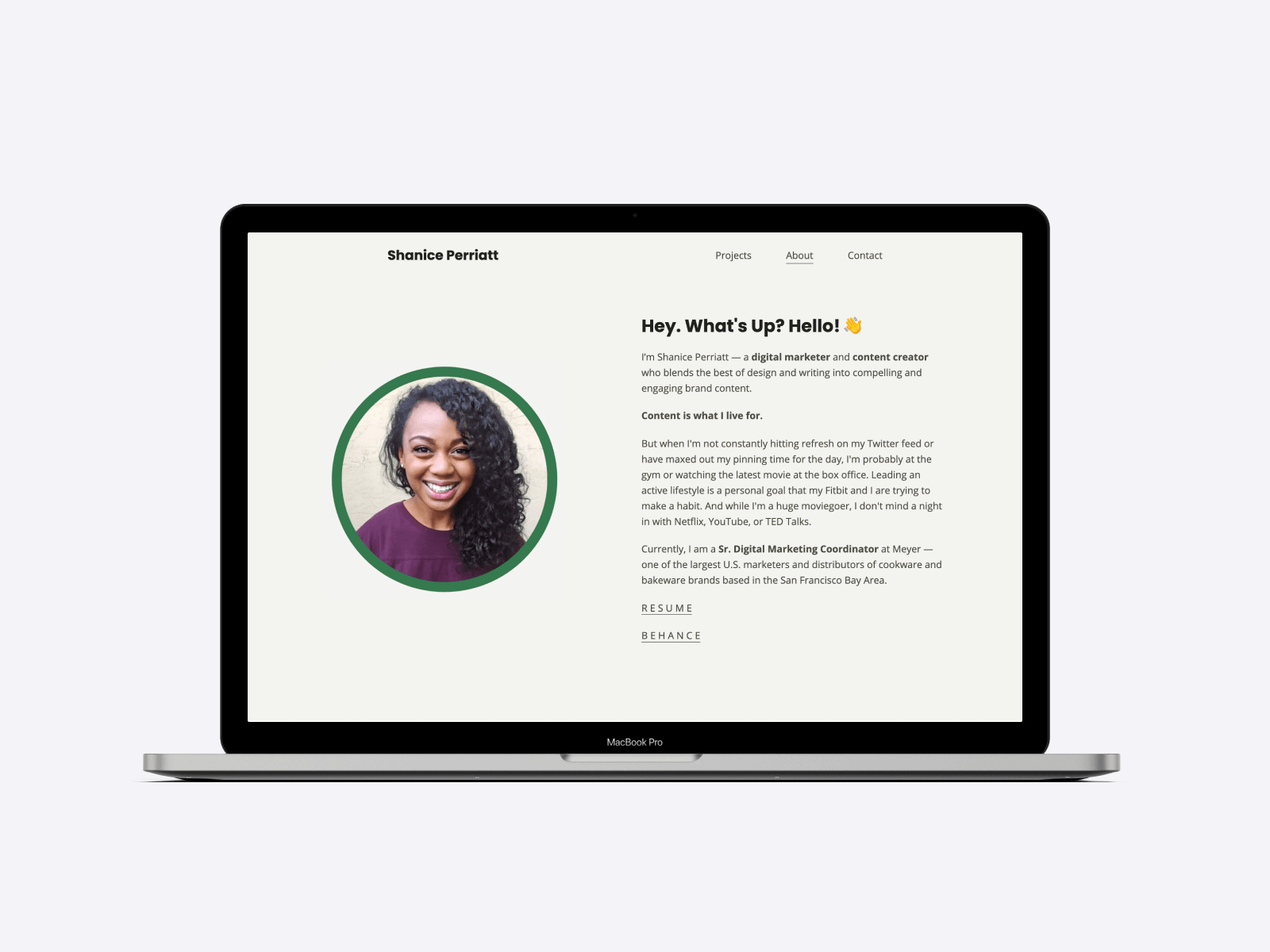
The about page of Shanice's writer website, created with Copyfolio.
The Contented Copywriter
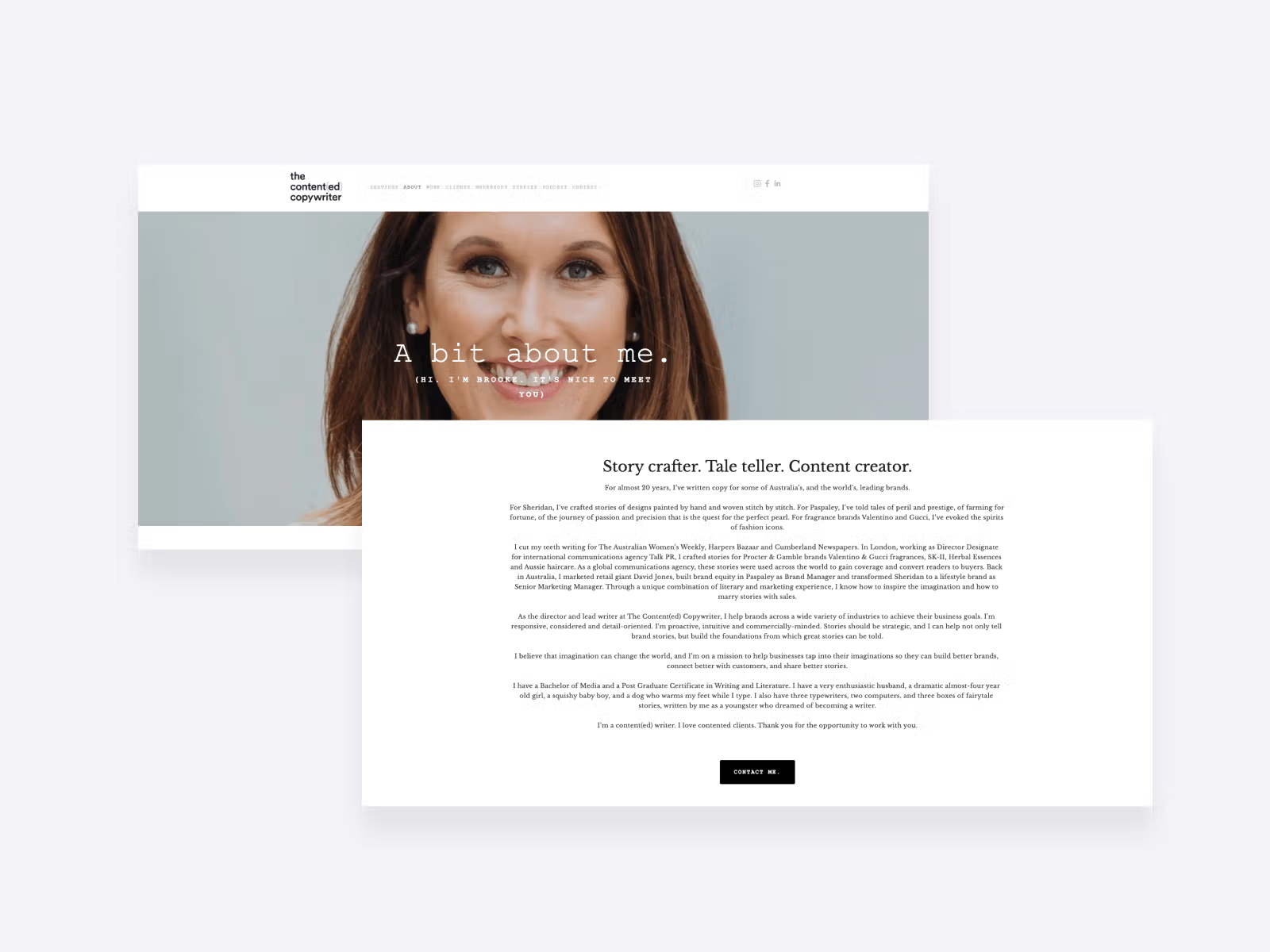
Kelsey O’Halloran

Erin Hart
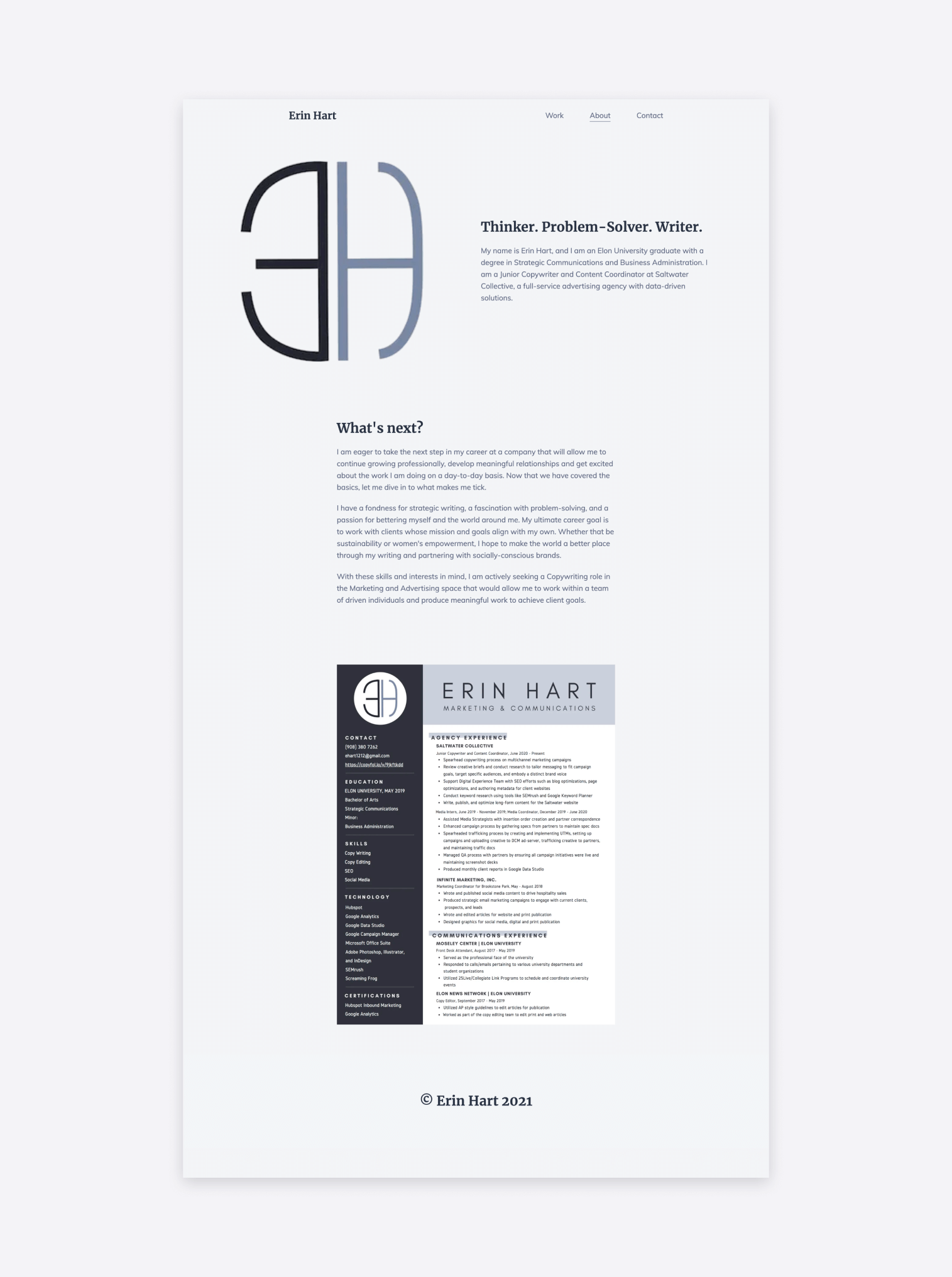
About me page including a copywriter resume, on Erin's website created with Copyfolio
Lisa Kirk Writing
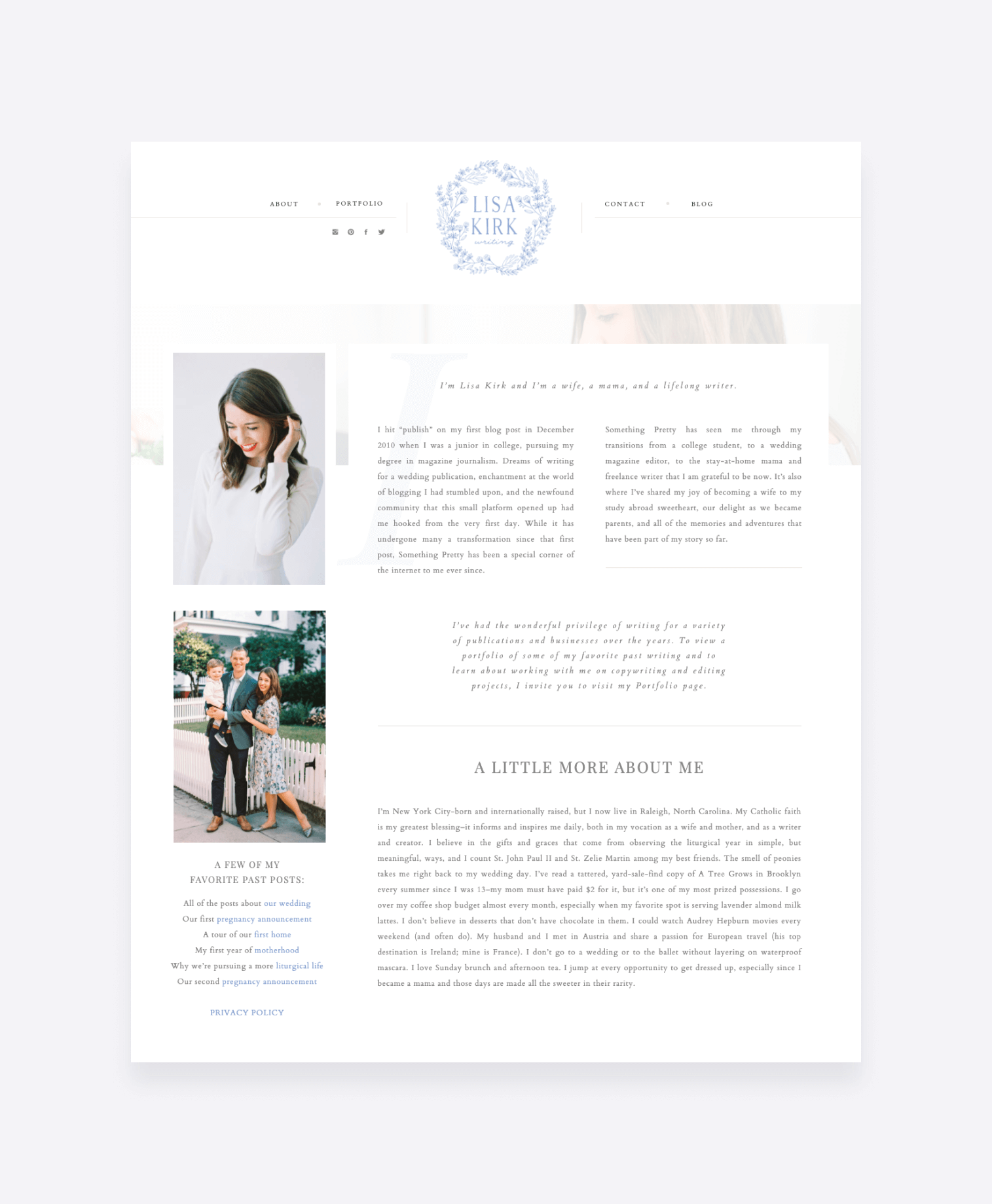
Tom Rigby
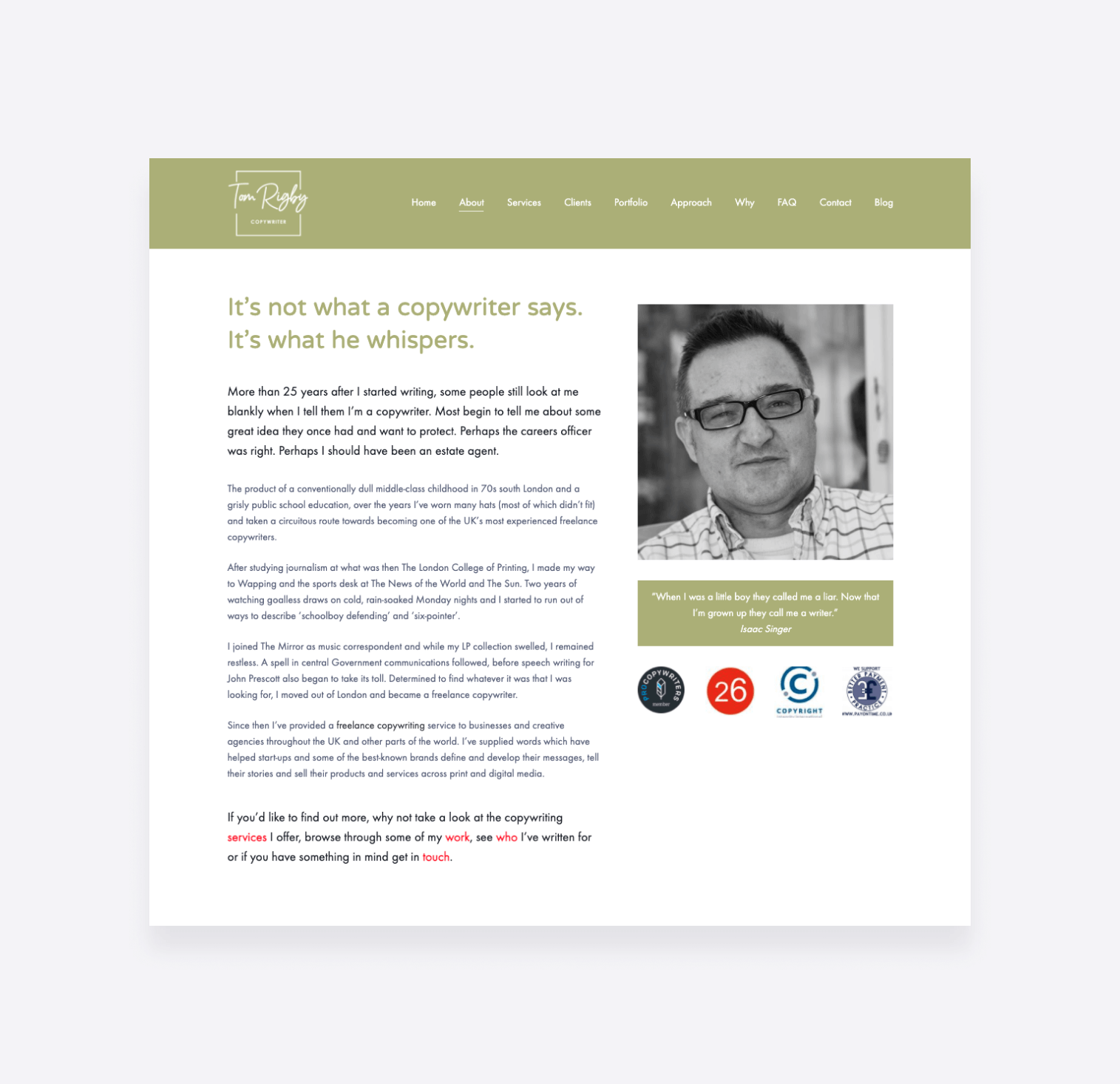
Amanda Cross
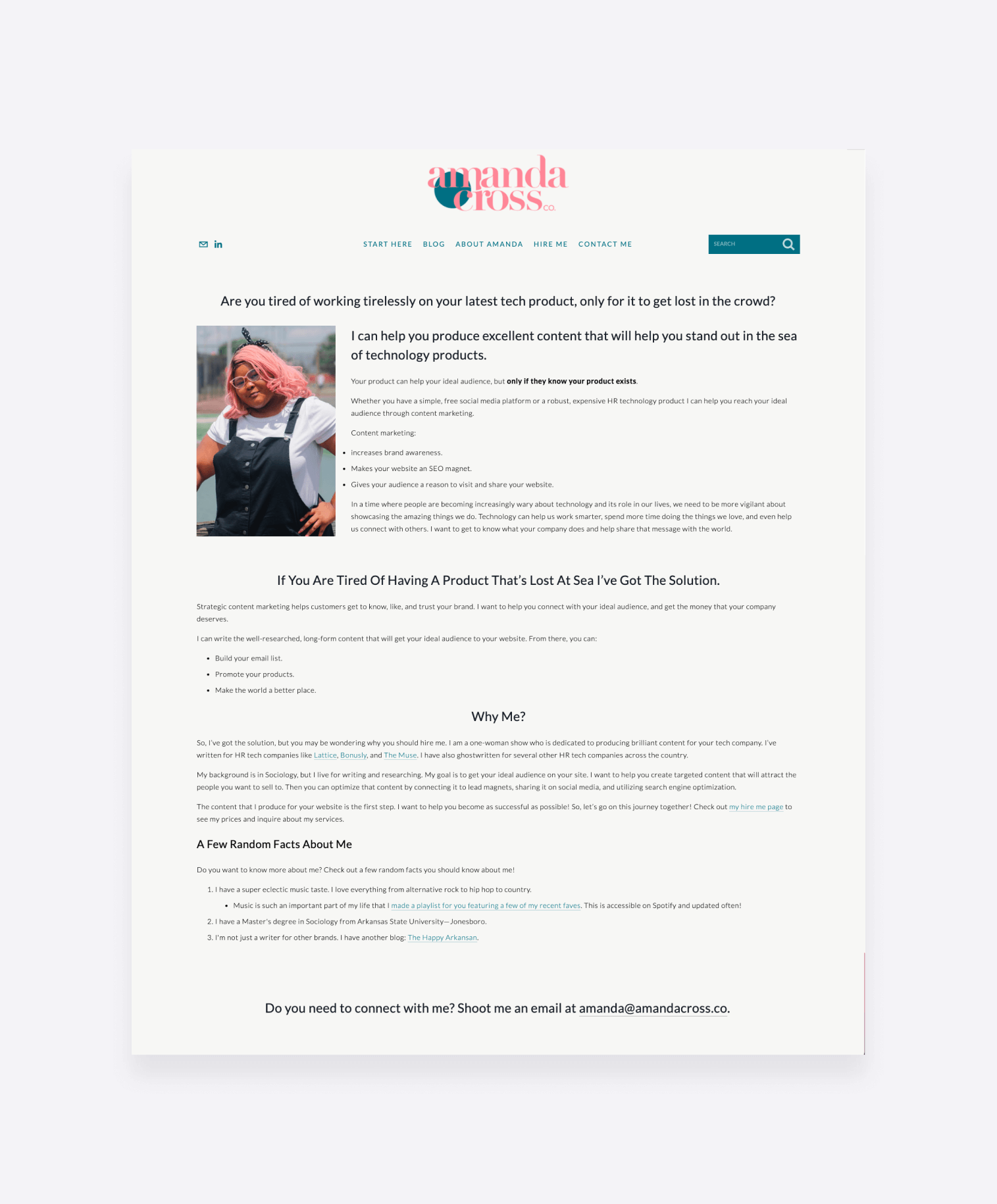
CopyKat Creative

Saurabh Kejriwal

Eve L. Ewing
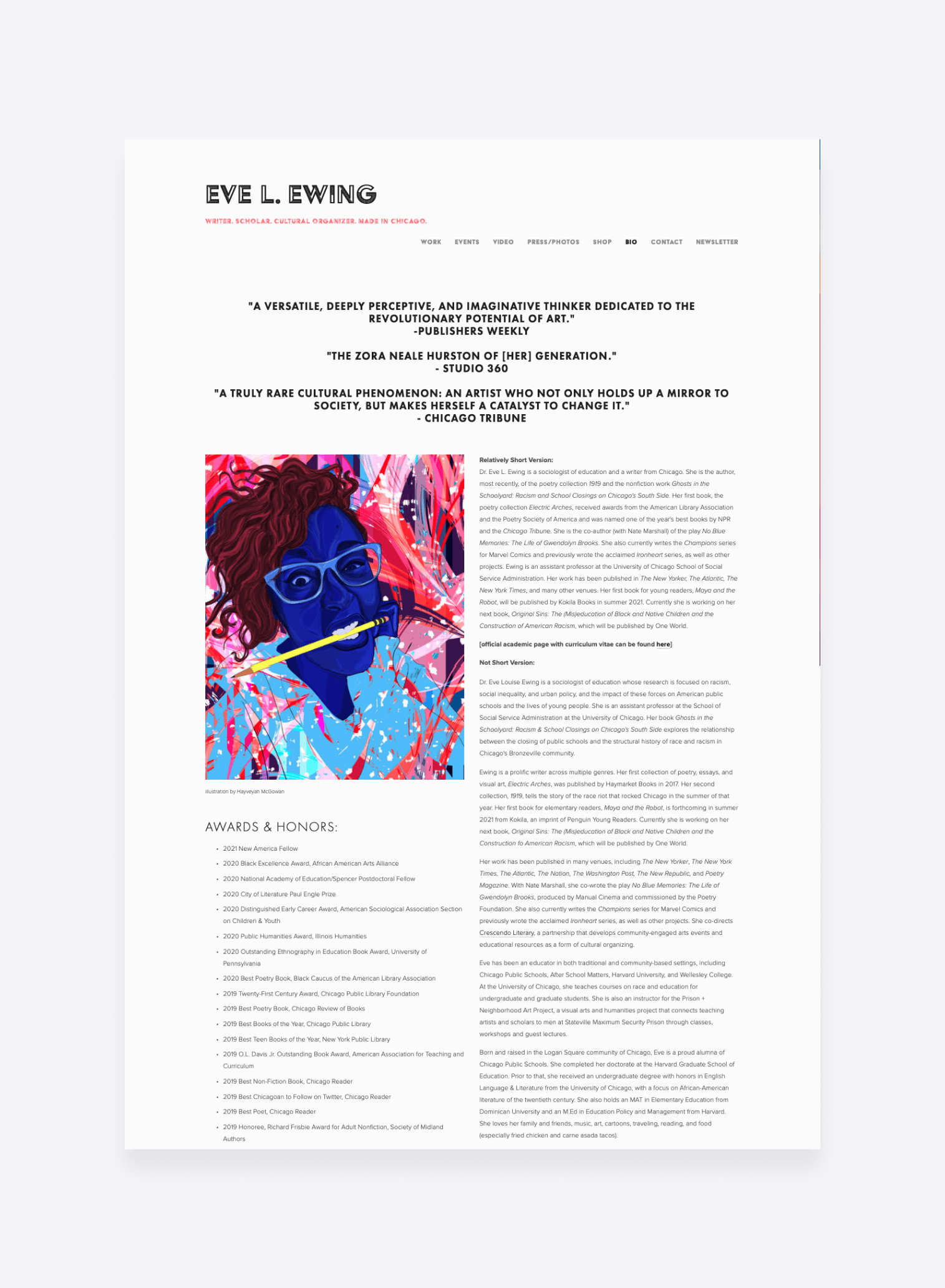
JT Copywriting
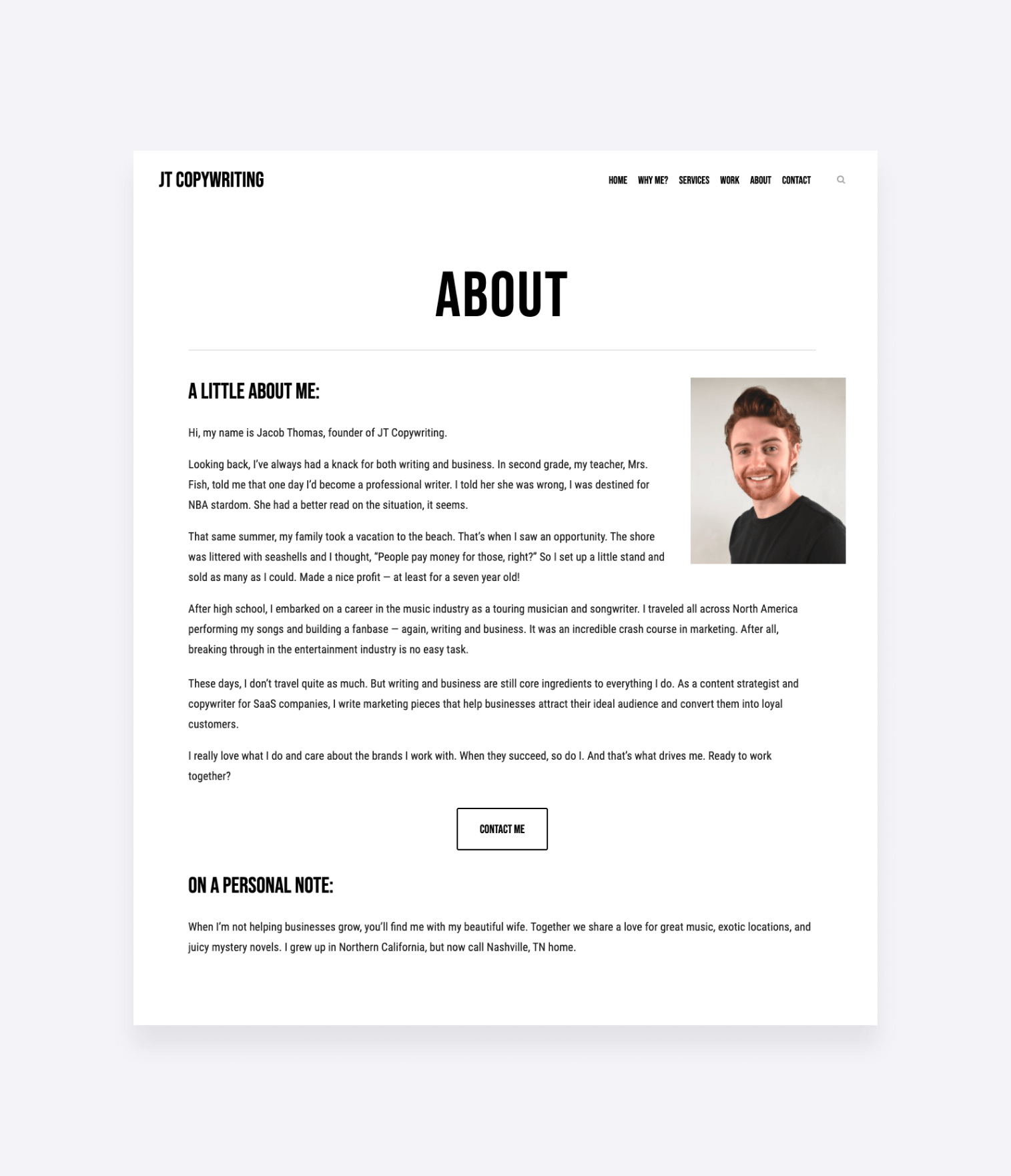
Evan Bishop
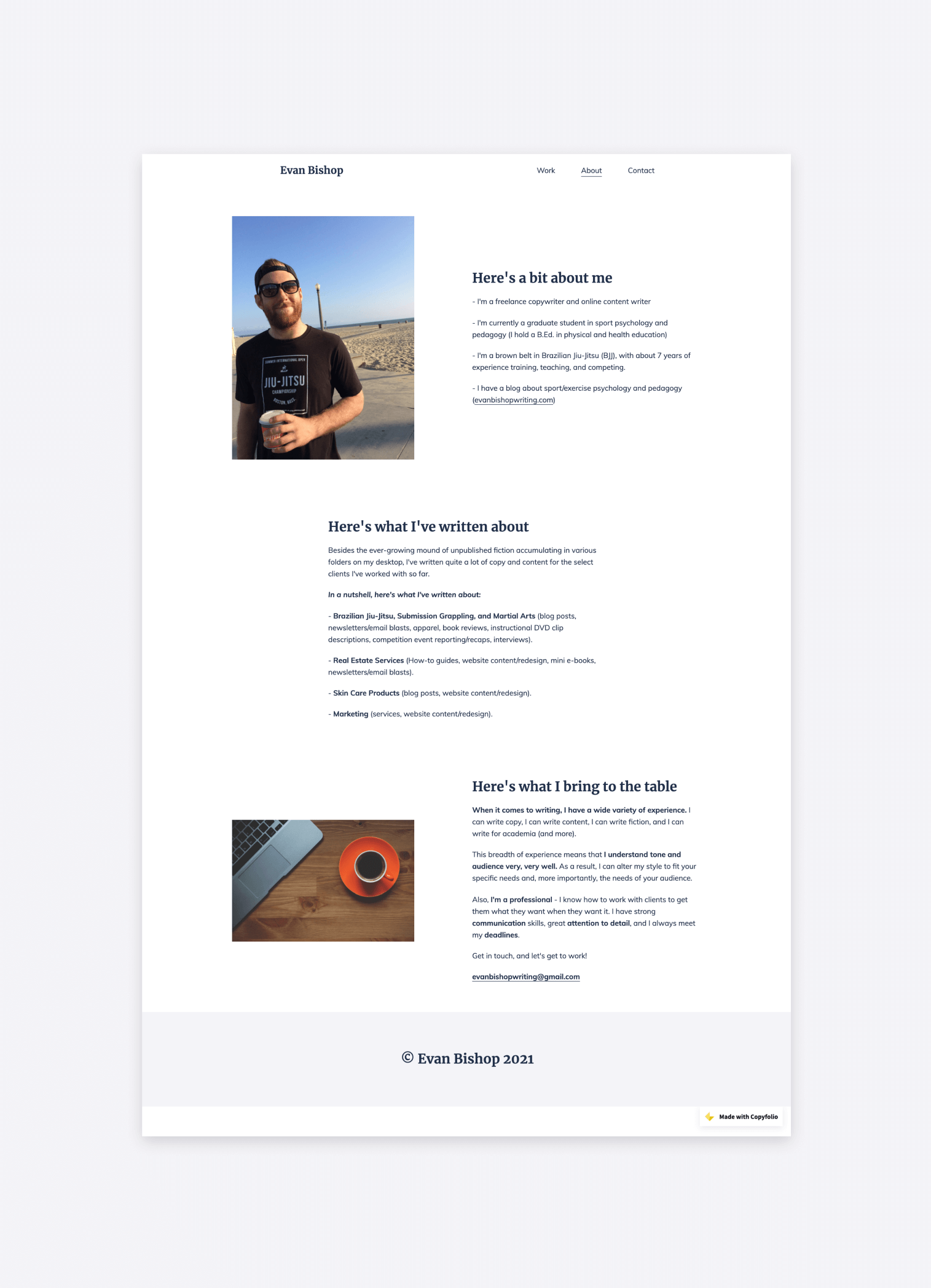
KD Copy and Content

Glenn Fisher
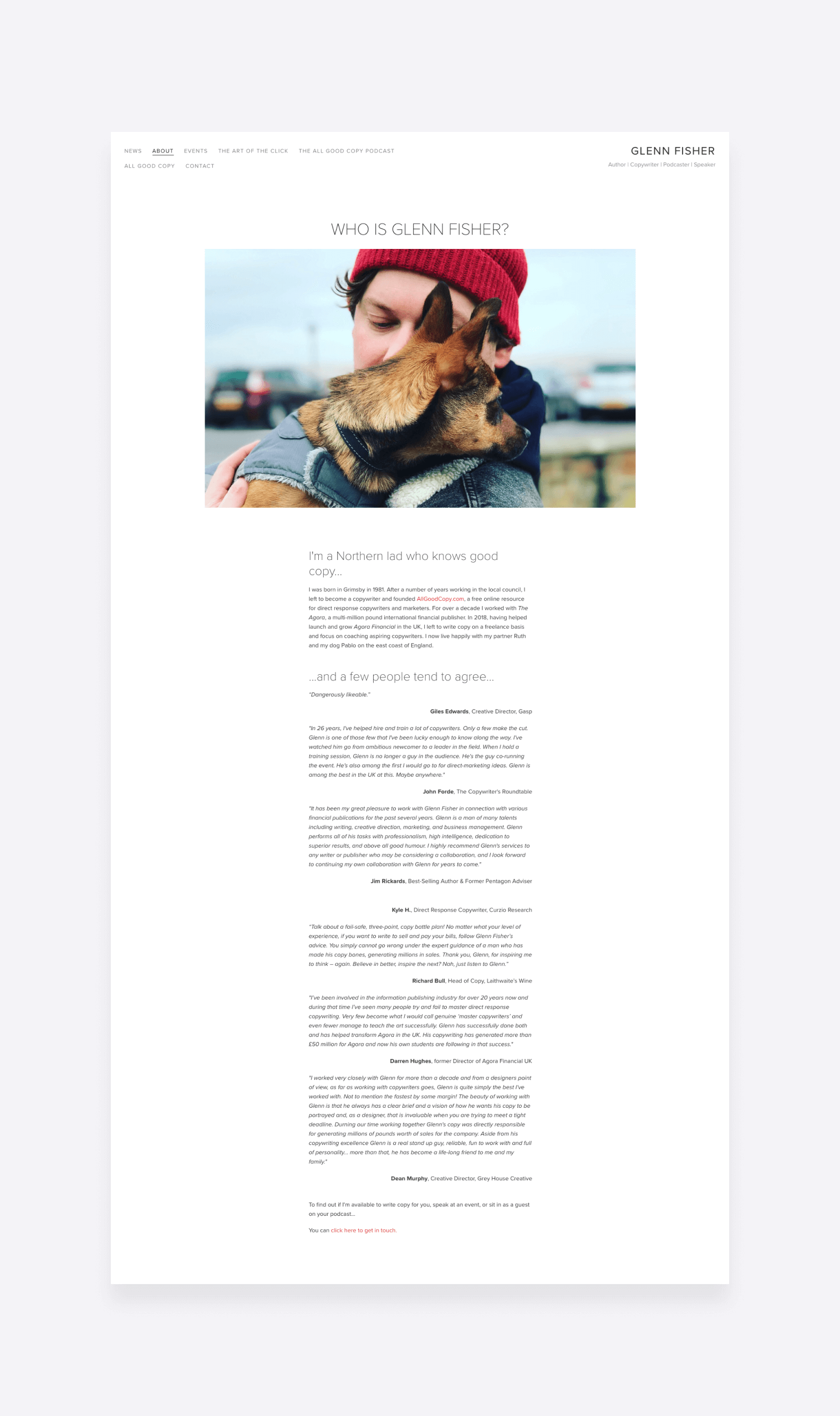
Why do you need an about me page?
Whenever we talk about writing portfolios or graphic design portfolios, we always recommend writing a really short bio on the front page of your site. But for that, the keyword is short –and you cannot possibly fit everything important about yourself into that one sentence, right? Right.
But that’s okay, nobody would expect you to. Why? Because that’s what the about me page is for! The short bio on your home page is just to catch their attention.
Whoever clicks on your about page after that, clearly wants to find out more about you. But your about page should be more than just a mere introduction. It’s your chance to also show them why you’re the best choice for them –whether that’s for hiring you for a new project, choosing you as their new employee, or simply recommending you to someone else.
Think of it as a mixture of what people traditionally think an about me page should be –and a sales page. So freshen up your copywriting skills if you need to and sweep them off their feet with your writing!
What to include in your about me (+examples)
Okay, okay, it’s easier said than done, we know. So let’s see some more specific and practical tips with examples for what you should include in your about me copy. We are going to list some guiding questions –go through them and answer each to create a strong base for your writer about page. We’ll show you example answers to these questions from the perspective of our marketer.
Who are you and what do you do?
This first one is probably the most obvious of them all, but introduce yourself and tell your readers who you are and what you do. As for the latter part, don’t just drop your job title and leave it at that.
Nowadays the same title could include a variety of responsibilities at different companies, so it’s a good idea to get into the details a little bit. Write about the kinds of tasks you do and elaborate on your areas of expertise.
“I’m Dorka, an online marketing manager. I’m specialized in the organic and creative side of marketing, focusing on content creation, search engine optimization, and social media marketing. I write articles for our blog, posts for our social media channels, copy for our website’s pages, and optimize everything to make sure people find us organically.”
What do you love the most about your career?
Once you explained what it is that you do exactly, you can talk a bit about what you love the most about your writing career. What are you the most passionate about? It will show your motivation and dedication to potential clients or employers, while also giving readers a peek into both your personality and expertise.
“Of all that, I love interacting with people the most. Whether it’s our consumers reaching out about a product, engaging with our content, or doing an interview with an industry expert to provide even more value for our readers.”
How did you get to where you are today? What are your biggest accomplishments?
Writing about how you got to where you are now can also be a valuable insight on your about page. If you aim for in-house or agency positions, your work history will be important for hiring managers. And if you’re a freelancer, reading how you started and grew can be insightful for potential clients, when deciding if you’re a good fit for them or not.
When you’re describing this journey, mention your biggest professional accomplishment too. It will add to your credibility and authority and help refine your area of expertise even further.
“I started working in digital marketing right away, after completing my master’s degree. I was focusing on SEO and organic social media marketing strategy. One of the most exciting challenges I had was helping to establish a brand from the ground up.
We created the customer personas, refined the brand’s tone of voice, and wrote the entire landing page and UX copy for the product. Seeing the latter resonate with our target audience and users, and driving conversion with them, was a great accomplishment in this past year.”
What are your personal values? What differentiates you from all the other writers?
It comes as no surprise if we say there are hundreds (if not thousands) of other writers in similar positions as you are right now. So it’s incredibly important to show how you are unique and different –and why you are a better choice than any other writer around. You can do that by stating your personal values and interests, or anything related to your work that makes you special.
Maybe you are a mother with strong family values, writing content for a similar audience. Maybe you’re experienced in the healthcare field and can write highly specialized, expert articles about health-related topics. Or perhaps a UX writer with a passion for supporting non-profit organizations.
Whatever it is, write it down and differentiate yourself from your competition.
“Essentially, I’m a writer writing for writers now. I’m conversing with them and looking for a chance to create valuable content that’ll help them in their careers. I love how having such a deep understanding of my audience gives me not only a better chance to address their problems, but a giddy excitement to do what I do.”
What are your professional goals? What do you want to do next?
Introducing who you are, what you do, and how you got there is one thing. But when it’s a potential future employer or client reading your page, where you want to go is just as important. Not only so they can see your motivations, but also to know if the direction you aim for aligns with their plans as well.
So write about your goals and what you want to achieve. If you have a long-time vision –which, if you take care of your personal brand, you should have–, write a little bit about that too.
“My goal right now is to make Copyfolio flourish with an all-organic marketing strategy. I aim to create content that addresses writers’ issues and to introduce them to a product that will help boost their careers and build their personal brand.”
How to write a powerful about page based on these about me examples
We’ve already covered most of the topics that you should go over on your about page. But let’s now get into the actual how-to-do-it part, based on these topics and the about me examples we started out with.
Write a page title and opening line that converts
The very first thing you need to take care of is the title and first sentence of your about me page. Now here we actually mean two different things, because they don’t need to be the same.
The first is the actual title of the page –this is what you can see on the tab of your browser, and also what shows up in Google. The way you write this page title will affect how well your about page will rank in Google, and also whether people will actually click on it when it comes up. Make sure to include:
- your name,
- your job title or occupation,
- and any important keywords about your work.
Just like in these writer about me examples that came up in Google:
Once that's done, it's time to write a catchy first line that will resonate with your readers. Scroll back up to the about me examples and check out what Amanda Cross wrote, for example. She starts out with a question that is likely to hit hard on some typical pain points.
Think of your audience and stay on-brand
As we often say on that you have to think about yourself and your business as a brand and invest time and effort into your personal branding. So when it comes to your about page, you have to write it like you would any other content: thinking about your audience and staying on-brand.
We have a few tips for that:
- Use a consistent tone of voice. Establish a tone in which you communicate to your readers and followers and make sure you always write in that. Especially when it comes to your about page, decide if you want to write in the first or third person, and stick to it! Read through the about me examples at the beginning to see how that looks on a page.
- Make sure it’s consistent with the rest of your online presence. Continuing on that thought, the way you write should be consistent on all platforms. When someone reads your posts on social media and navigates to your about page later, from the way you write, they should know (and feel like) they’re reading something from the same person.
- Put yourself in your readers’ shoes, think about your audience. As we mentioned earlier, your about me page should be a mix of an introduction and a sales page. And one of the key ingredients to writing a killer sales page is knowing your audience and addressing their pains and needs in your copy. So think about who you’re writing the page for. Write about the value you’re going to provide for them and about how you’re about to solve their problems.
- Emphasize your unique selling point (USP). While writing about how you’re going to deliver what they need, you should also write about why you’re the best person to do that. Just as we mentioned earlier: differentiate yourself from your competition.
Include images to make it visually appealing
Another aspect you should pay attention to when creating your about me page is how user-friendly (or should I say reader-friendly?) it is. What we mean by that is that a huge wall of text can be intimidating, and it’s not exactly inviting one to read. Unless you’re looking at an actual book, of course.
One way to help with that is adding pictures to the page. Including a photo of yourself at the start of the page is a standard practice for about me pages, for example. But you don’t have to limit yourself to pictures of only yourself –you can add ones that are purely decorative. With those you can show the “vibe” of your personal brand easily.
For those, use your own images, or make sure to find royalty-free ones so you won’t get into trouble because of them later. Luckily with sites like Unsplash or Pixabay, you can easily find plenty of high-quality royalty-free photos to use.
Break it up into sections for easier reading
Adding images is not the only way to break up your text for easier reading. You can (or rather should) add headlines to separate it into multiple sections. This will:
- make the page less overwhelming, as shorter sections are easier to read,
- make it possible for skimmers to just scan the page, going through the headlines,
- and it will help with SEO too, if you also include important keywords.
It’s really not a lot of effort from your side, but it will make all the difference for your readers.
Back up your statements with statistics and social proof
One way to make the contents of your about me page more powerful is to back up your statements with either statistics or social proof, just like you saw in our about me examples.
After all, anybody could say something like “I’m the best email marketing copywriter in town” without it being true. But if you say “I’m an expert in writing email copy. In the last months, the emails I’ve written all got open rates of about 30% and click-through rates about 15%”, it will be much more tangible and believable for your readers. Add a screenshot too to prove it for even more credibility.
Or if your work experience is not quantifiable like that, you can add testimonials from previous clients or colleagues to back up your statements of expertise.
Add links for easier navigation and better SEO
Adding some links to your about page would also be a good idea.
First of all, you definitely should link to your contact page or contact information at the end. Because if somebody has finished reading your awesome about page, there’s a high chance they’ll want to contact you, right?
Other than that, you can also link to some of your important pages and content either at the end or along the way as you mention them. This way it will be easy for readers to find out more details about your work –and the internal links will be great for your site’s SEO too.
Finish with a call-to-action for more conversions
And then one of the most important tips of all: finish your about me page with a clear call-to-action.
If you’re a copywriter or content writer, you’ll know how important it is to make it clear for your readers what you want them to do next. Is it to check out your projects? Is it to download your writer resume? Or to get in touch with you?
Whatever you want their next action to be, you need to write it down clearly. It’d be a good idea to make it bold or even use a “heading” formatting to make it stand out.
Proofread to avoid typos and mistakes
Proofread, proofread, proofread! We cannot emphasize this enough. Especially if you’re a writer, having typos or grammatical errors on your about page (or anything that was written by you, really) will make you look really unprofessional. Or make people assume you have an utter lack of attention to detail. You can check the about me examples above –there no mistakes in any of them.
But because sometimes it’s hard to find the mistakes in your own writing, it’s a good idea to:
- ask a few people to read it and mark any possible mistakes for you,
- print it out and then read it aloud yourself,
- or plug it into a software like Google translate that will read it out loud for you.
Don’t worry about publishing your about page a few days later, because you’re waiting for others to get back to you on this. It’s a thousand times better to have an immaculate page a few days later than having one sprinkled with mistakes as soon as possible.
Follow our tips and about me examples & write the perfect about page
You now have seen almost a dozen great about me examples and know all the things you should be paying attention to, when writing the copy for your about page. But wait… do you actually have a website to add that about page to?
If the answer is no and you’re not really sure how to easily create a website, you should check out Copyfolio. Copyfolio makes it quick and easy to make a website and portfolio for free, adding an about page by default that’s ready and there for you to fill.
